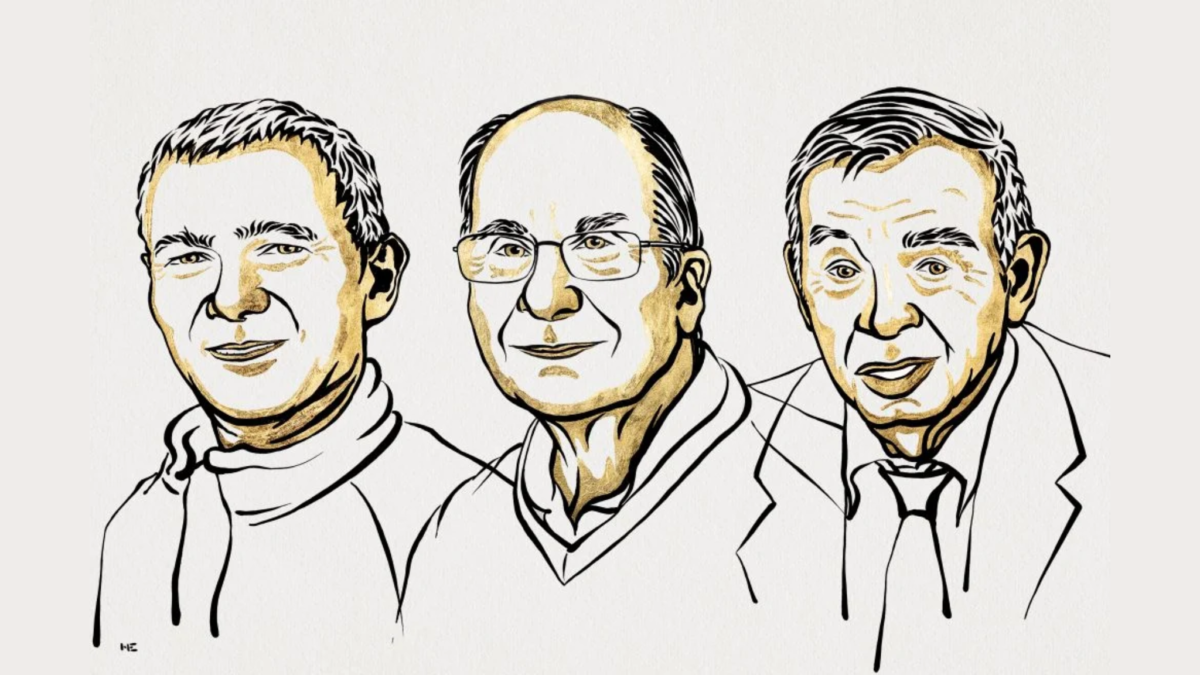
Image Credit: Ill. Niklas Elmehed © Nobel Prize Outreach
The Nobel Prize Chemistry for 2023 has been awarded to Scientists Moungi Bawendi, Louis Brus and Alexei Ekimov “for the discovery and synthesis of quantum dots.” The Nobel Prize Chemistry announcement has followed that of the Physics award for attosecond physics and Medicine award for mRNA vaccine technology that were announced earlier this week.
The Laureates for this year’s Nobel Prize Chemistry include Alexei Ekimov, the Chief Scientist at Nanocrystals Technology Inc, Louis Brus professor at Columbia University, and Moungi Bawendi, a professor at the Massachusetts Institute of Technology (MIT), USA.
Nobel Prize Chemistry Winners Leaked before Announcement
Despite being the most secretive award process due to being regarded as the most prestigious award, the News about the winners was however leaked and emailed to Swedish media outlets on 4th October 2023, hours before the official press announcement was scheduled. The awarding authority – Royal Swedish Academy of Sciences said it was investigating the leak.
Nobel Prize winner leaks are rare, with the awarding academies being very thorough about keeping the winners name a secret after months of shortlisting and meticulous selection. This leak for Nobel Prize Chemistry is quite a testament to the process. It was reported that the leak came from a press release that was accidentally sent out too early.
This is also not the first time that the names of winners have slipped out before the official announcements. The literature prize specifically has been leaked multiple times through the years. Swedish newspaper Svenska Dagbladet had got hold of the name of the medicine winner and published it in advance. This year’s Nobel Prize Chemistry was leaked about four hours before the official announcement, with most Swedish media outlets publishing it except for the Associated Press.
“It is an important principle that the prize winners are the first to find out, and that everyone else finds out afterward at the same time. But in the electronic era the leaks can occur in different ways than in the newspaper era,” said Göran Hansson, the former head of the Royal Swedish Academy of Sciences.
A Look at Quantum Dots
Quantum dots, as the name suggests, are absolutely miniscule particles, just a few nanometers in size. They can have some very unique optical properties due to this tiny size. Although they are made up of similar atoms and the structure is the same as bulk materials, quantum dots can have properties that can vary quite a bit with variation in their sizes. Macroscopic objects in general have different properties than micro and nano-scale objects of similar composition just due to the fact that quantum forces dominate at these scales and influence the behavior of these objects.

Image Credit: © Johan Jarnestad/The Royal Swedish Academy of Sciences
Ekimov and Brus are credited with independently creating quantum dots, and Bawendi is said to have revolutionized the chemical production of high quality quantum dots. These quantum dots form the basis of QLED technology, seeing applications from TVs and Monitors and other LED screens and illuminating our world this way. They can also add nuance to the light of some LED lamps, with biochemists and doctors using them in diagnosis and research as well as targeted drug delivery.
This technology in general also has various applications across the tech world including sensors-detectors, quantum computers, anti-counterfeit markings just to name a few. The Nobel Prize Chemistry was announced to scientists pioneering this technology, massively improving our tech in many fields such as electronics and medicine alike.



